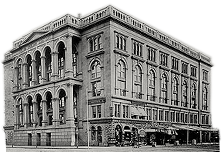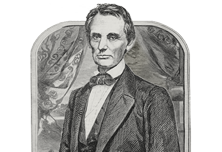Introduction to Color Theory

Cost: $470.00
6 In-person Sessions
Sundays, February 15 to March 22, 2026
11:00 am–2:00 pm
Location: 41 Cooper Square
In the mid-20th century, two influential artists, Josef Albers and Johannes Itten, independently developed courses for teaching color theory. Eventually, they went on to publish books on the subject that continue to profoundly influence artists and art students today. Their teachings are practical guidance to seeing and understanding visual effects. In his *book “The Interaction of Color” Albers wrote “In visual perception a color is almost never seen as it really is – as it physically is. This fact makes color the most relative medium in art.” In his *book "The Elements of Color", Itten introduces 7 possible color contrasts: "each is unique in character and artistic value, in visual, expressive, and symbolic effect; and together they constitute the fundamental resource of color design".
*It is not necessary to purchase the books used in this workshop. Instructional PDFs including images will be provided.
Required Materials:
- Color Aid Paper 3" x 4.5" pack of 314 colors
- 2 Glue Stick
- 8 1/2" x 12" self-healing cutting mat
- #1 X-acto knife set w/replacement blades
- 2 pads 9" x 12" Bristol smooth surface (15 sheets in each pad)
- 12" metal non-slip ruler
- 6H pencil
Other requirements:
- clean paper towels and/or some inexpensive 8 ½ x 11 printer paper
- pencil sharpener and erasers
- a well-lit environment free from distractions
- clean table space to work
LESSON PLAN:
Class #1 Intro: The What, Why, and How of Color Theory
- What is color theory?
- The study of color and its effects; the study of color’s relationship...but first, what is color? The refraction of white light into different wavelengths
- How do we see color? Eye chart/rods and cones
- We all see color differently; perception is personal and subjective / color blindness
- Ishihara test/color, fatigue/lighting/computer monitors/color accuracy
- Why study color theory?
- To understand these effects and apply them in artwork in dynamic and expressive ways (image examples of artworks that show dynamic relationships of color)
- How to study color theory?
- By working with the exercises outlined in “Interaction of Color” by theorist Joseph Albers, which engage direct exploration using Color-Aid paper (classes #1-3)
- By working with the concepts of color theorist Johannes Itten, who defined color in terms of color contrasts (classes #4-6)
- Technical Demo: How-tos of cutting and gluing
- X-acto blade safety/use / disposal/use of cutting board
- Using the ruler to measure and set squares in place perpendicularly
- Using the glue-stick
- Unpacking Color-Aid/handling the sheets and moving them around
- Importance of precision
- Description of Albers Exercise (w/ image presentation)
- Making 1 color appear as 2
- Understanding value: making a value chart with grays
Class #2 Albers con’t
- Cultural color: Are certain colors inherently good/bad, male/female, Eastern/Western
- NO, but color prejudice influences attitudes and understandings of color Color interactions & experiences: color contrasts (warm/cool; light /dark), flushing effect, fluting effect, synesthesia, optical color mixing, chromostereopsis, transparency, vibrating boundaries, vanishing boundaries, after-image
- 2 different colors appearing as 1 subtraction of color
- Illusion of transparency
- Bezold effect–optical color mixing
Class #3 Albers con’t
- Vanishing boundaries/colors of equal light intensity
- Reversed grounds
- After image
Class #4 Completion of Albers / conclusion and sharing
- Exercises: Light/Dark contrast with different hues
- Cold/Warm–exploring warm and cool with gradations of:
- greens (yellow to blue)
- purples (red to blue)
- “fire and water contrast”:dark & light blues to light & dark yellows/oranges/reds
Class #5 Itten con’t
- Complementary contrast: saturated/desaturated/light/dark
Class #6 Itten con’t
- contrast of hue (free study)
- landscape study; contrast of saturation/atmospheric perspective
Conclusion of Albers/Itten and sharing entire set of exercises (13 total)
Class content, lessons and timeline subject to change
Course Code: 117580
Instructor(s): Eric Hibit




